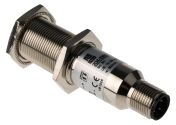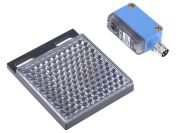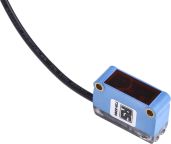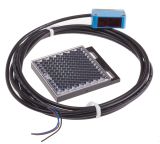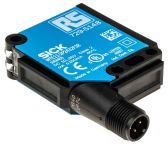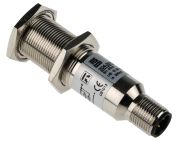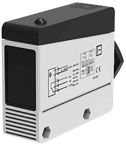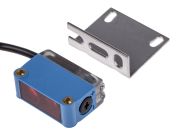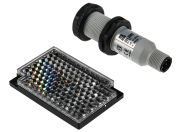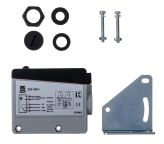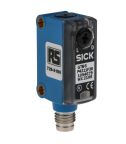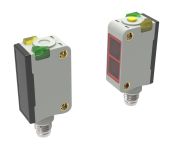Photoelectric Sensors
Photoelectric sensors determine the distance, absence, or presence of physical objects by emitting a field or beam of electromagnetic radiation. An object is detected by measuring alterations in the return signal, this is achieved as sensors have an Emitter for emitting light and a Receiver for receiving light. There are 3 main types of photoelectric sensors, through-beam, retro-reflective and diffuse, which vary slightly in the way they function.
The basic function of each is to detect the presence or absence of objects or measure the distance to the object. You can learn more in our guide to photoelectric sensors.
Types of Photoelectric Sensors
- Through Beam Sensors: (aka thru-beam) rely on two separate housings, one for the transmitter and one for the receiver, with the transmitter providing a continuous beam of light to the receiver. Each time an object passes through the beam, this interrupts the signal between the transmitter and receiver, which in turn causes the receiver to send an electrical signal to the output. Through-beam sensors are suited to long-distance sensing and can detect almost any object, irrespective of colour or angular motion.
- Retro-reflective Sensors: (retroreflective) have both the transmitter and receiver contained within the same housing, but require a reflector opposite to the sensor. The reflector bounces the light beam back to the transmitter until an object breaks the beam. Highly reflective objects, such as aluminium, require sensors with polarising filters. The filter allows the sensor to acknowledge that the reflected light from reflecting materials is different from the reflector.
- Diffuse Sensors: (proximity sensors) are easier to install as only one device must be mounted. This is because the transmitter and receiver are contained within one housing. Diffuse sensors use the reflection from the target object within a predetermined sensing range.
- The transmitter sends out a continuous beam of light, once this hits the target it is diffused in all directions, a part of this light is reflected and recognised by the receiver, the receiver then sends an electrical signal to the output. A special type of diffused mode is background suppression which enables the user to precisely control the sensing range.
Applications of Photoelectric Sensors
Photoelectric Sensors can be used in various settings, some of which include:
- Food Industry
- Pharmaceutical Industry
- Packaging Plants
- Automotive Industry
- Doors & Gates
Browse the broad range of Photoelectric Sensors that RS has to offer and order today for next-day delivery. Choose from a range of industry-leading brands, including SICK Omron Pepperl+Fuchs ifm Electronic BannerTelemecanique Sensors.
Popular Searches
Related links
- A Guide to Photoelectric Sensors
- RS PRO Retroreflective Photoelectric Sensor 50 mm → 7 m Detection Range
- ifm electronic Retro Reflective Photoelectric Sensor 0.075 → 8 m Detection Range IO-LINK
- SICK Photoelectric Retro-Reflective Sensor PLG3 Series
- Baumer Retro Reflective Photoelectric Sensor 3.2 m Detection Range
- SICK Retroreflective Photoelectric Sensor >6 m Detection Range
- RS PRO Through Beam Photoelectric Sensor 15 m Detection Range
- Festo Retro-Reflective Sensor

